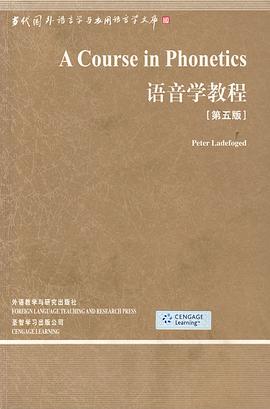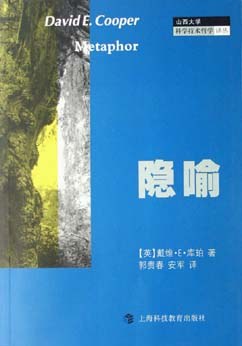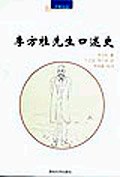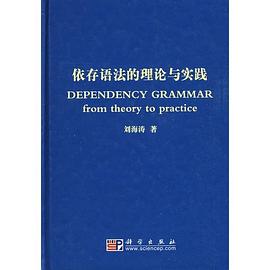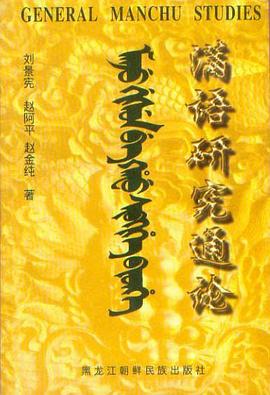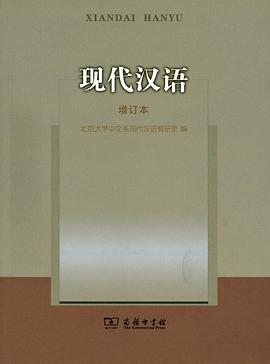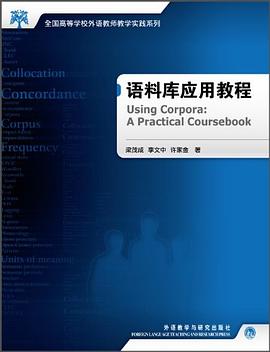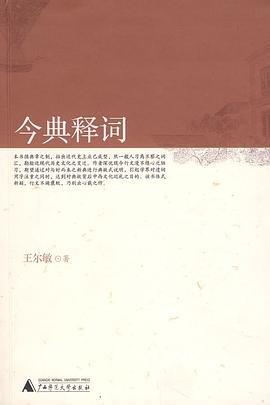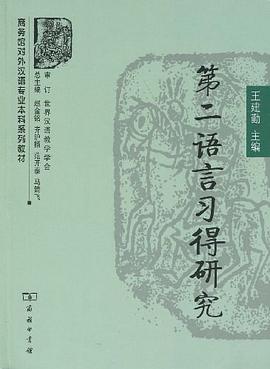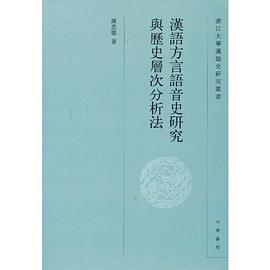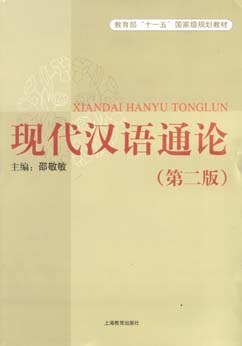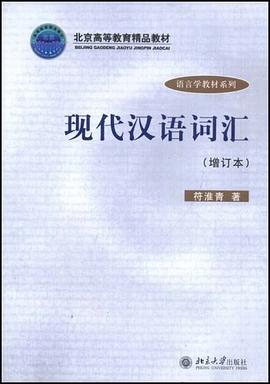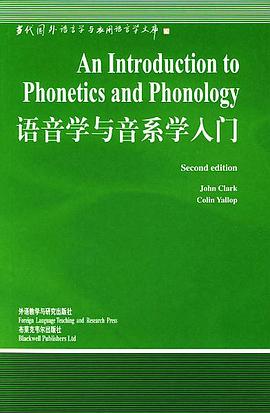

具体描述
'Informative, interesting and well written... an excellent general reference for students and scholars at a variety of levels' Language, reviewing the first edition Assuming no prior knowledge of the subject. this book offers a thorough introduction to phonetics and phonology. It is unusually comprehensive, including detailed attention to articulatory and acoustic phonetics as well as to the foundations of phonolgical analysis. The second edition of this highly successful textbook incorporates several improvements: a completely new chapter on speech perception has been added: the material on anatomy and physiology has been rearranged and much of the detail placed later in the book to made it less demanding on readers; further coverage has been given to the sounds of the world's languages; and the entire text has been edited to bring it up to date.
-------
目录
王宗炎序
导读
Figures
Tables
Preface to the Second Edition
List of Abbreviations
1 Introduction
1.1 Phonetics and phonology
1.2 Theory and analysis
1.3 Relationships with other fields
1.4 Outline of this book
Exercises
2 Segmental Articulation
2.1 Introduction
2.2 A functional overview of the speech production process
2.3 The organs of speech
2.4 Describing speech sounds
2.5 Airstream mechanisms
2.6 Modes of phonation
2.7 Vocalic sounds
2.8 Duration and glide in vocalic articulations
2.9 Consonantal sounds
2.10 Vocal tract Place
2.11 Tongue position
2.12 Manner of articulation
2.13 Stricture
2.14 Force
2.15 Length
2.16 Voice onset
Exercises
3 Units of Speech
4 The Phonemic Organization of Speech
5 The Generative Approach to Phonology
6 The Anatomy and Physiology of Speech Production
7 The Acoustics of Speech Production
8 Speech Perception
9 Prosody
10 Feature Systems
11 The Progress of Phonology
Appendix 1:Phonetic Symbols
Appendix 2:Features
References
Index
文库索引
作者简介
John Clark is Chief Executive Officer of the University of Western Sydney, Hawskbury. He was previously Director of the Speech. Hearing and Language Centre at Macquarie University. Sydney. Colin Yallop is Associate Professor in Linguistics at Macquarie and is Director of the Universty's Dictionary Research Centre.
目录信息
Tables
Preface to the Second Edition
List of Abbreviations
1. Introduction
1.1 Phonetics and phonology
1.2 Theory and analysis
1.3 Relationship with other fields
1.4 Outline of this book
Exercises
2. Segmental Articulation
2.1 Introduction
2.2 A functional overview of the speech production process
2.3 The organs of speech
2.4 Describing speech sounds
2.5 Airstream mechanisms
2.6 Modes of phonation
2.7 Vocalic sounds
2.8 Duration and glide in vocalic articulation
2.9 Consonantal sounds
2.10 Vocal tract place
2.11 Tongue position
2.12 Manner of articulation
2.13 Stricture
2.14 Force
2.15 Length
2.16 Voice onset
Exercise
3. Unit of Speech
3.1 Identifying the units of speech
3.2 Complex articulations
3.3 Nasalization
3.4 Labialization
3.5 Palatalization
3.6 Velarization and pharyngealization
3.7 Affrication
3.8 Double articulation
3.9 Vowel retroflexion
3.10 Diphthongization
3.11 Syllabicity
3.12 Segmentation and structure
3.13 Diphthong and related phenomena
3.14 Interpretations
Exercise
4. Phonemic Organization of Speech
4.1 Phonetic variability
4.2 The phoneme
4.3 Allophones
4.4 Phonemic norms
4.5 Pattern and symmetry
4.6 Phonological reality
4.7 Units and boundaries
4.8 Invariance and overlap
4.9 Biuniqueness and neutralization
4.10 Morphophonemic alternation
4.11 Free variation
4.12 The sounds of the world’s language
Exercise
5. The Generative Approach to Phonology
5.1 The origins of generative phonology
5.2 The sound pattern of English
5.3 Basic rule notation in generative phonology
5.4 Formalism and evaluation
5.5 Abbreviation devices in rule notation
5.6 Rule order
5.7 Functional considerations
5.8 Naturalness and markedness
5.9 Abstractness
Exercise
6. The Anatomy and Physiology of Speech Production
6.1 Introduction
6.2 Conventions of anatomical description
6.3 The nervous system
6.4 The respiratory system
6.5 The larynx
6.6 Phonation
6.7 The pharynx
6.8 The velum and nasal cavity
6.9 The oral cavity
6.10 The tongue
6.11 The lips
6.12 The mandible
Exercise
7. The Acoustic of Speech Production
7.1 The nature of sound
7.2 The propagation of sound
7.3 Simple harmonic motion
7.4 Complex vibrations
7.5 Resonance
7.6 Basic amplitude properties of sound waves
7.7 Time domain properties of sound waves
7.8 Frequency domain properties of sound waves
7.9 Some basic perceptual properties of sound waves
7.10 The acoustic model of speech production
7.11 Phonation as a sound source
7.12 Source of frication
7.13 The vocal tract filter in vowel production
7.14 Spectrographic analysis of speech
7.15 Acoustic properties of vowel quality
7.16 The vocal tract filter in consonant production
7.17 The acoustic properties of consonants in syllables
7.18 The relationship between articulatory and acoustic properties of speech production
7.19 Acoustic features of prosody
Exercise
8. Speech Perception
8.1 Introduction
8.2 The auditory system
8.3 Psychophysical properties of the auditory system
8.4 Speech intelligibility
8.5 Acoustic-phonetic perception
8.6 Vowel perception
8.7 Consonant perception
8.8 Units of perception
8.9 Prosodic perception
8.10 Word recognition
8.11 Models of speech perception
8.12 Conclusion
Exercise
8. Speech Perception
8.1 Introduction
8.2 The auditory system
8.3 Psychophysical properties of the auditory system
8.4 Speech intelligibility
8.5 Acoustic-phonetic perception
8.6 Vowel perception
8.7 Consonant perception
8.8 Units of perception
8.9 Prosodic perception
8.10 Word recognition
8.11 Models of speech perception
8.12 Conclusion
Exercise
9. Prosody
9.1 Introduction
9.2 The phonetic basis of suprasegementals
9.3 The systemic organization of prosody
9.4 Tone languages
9.5 Pitch-accent languages
9.6 Stress in English
9.7 Stress assignment
9.8 Intonation in English
Exercise
10. Feature systems
10.1 Introduction
10.2 Acoustic features
10.3 Articulatory features
10.4 Perceptional features
10.5 Distinctive features
10.6 Cover features
10.7 Abstract features
10.8 Accuracy and university
10.9 Universal feature systems
10.10 Features and discreteness
10.11 Hierarchical organization of features
10.12 Feature geometry
10.13 Overview
Exercise
11. The Progress of Phonology
11.1 Currents of theory
11.2 Phonetics and phonology before the twentieth century
11.3 The phoneme
11.4 The traditions of phonetics
11.5 Phonology in North America
11.6 The Prague School
11.7 Glossematics and stratification phonology
11.8 Prosodic phonology
11.9 Generative phonology
11.10 Natural generative phonology
11.11 Natural phonology
11.12 Autosegmental and CV phonology
11.13 Metrical phonology
11.14 Lexical phonology
11.15 Dependency phonology
11.16 Experimental phonology
11.17 Conclusion
Exercise
Appendix 1: Phonetic Symbols
1.1 Vowel symbols
1.2 Consonant symbols
1.3 Diacritics and conventions for complex articulations
1.4 Symbols used in transcription of English
Appendix 2: Features
2.1 Jakobson and Hall’s distinctive features
2.2 Chomsky and Hall’s universal set of phonetic features
2.3 Ladefoged’s ‘Traditional Features’
2.4 Components in dependency phonology
References
Index
· · · · · · (收起)
读后感
这本书更像一个comprehensive survey,回顾了phonetics和phonology的发展,比较面面俱到。 Phonetics的比例较重,contentful and highly descriptive;phonology就只有两章,一章介绍generative phonology,但是conceptual issue and technicality都一笔带过,另外一章介绍pho...
评分这本书更像一个comprehensive survey,回顾了phonetics和phonology的发展,比较面面俱到。 Phonetics的比例较重,contentful and highly descriptive;phonology就只有两章,一章介绍generative phonology,但是conceptual issue and technicality都一笔带过,另外一章介绍pho...
评分这本书更像一个comprehensive survey,回顾了phonetics和phonology的发展,比较面面俱到。 Phonetics的比例较重,contentful and highly descriptive;phonology就只有两章,一章介绍generative phonology,但是conceptual issue and technicality都一笔带过,另外一章介绍pho...
评分这本书更像一个comprehensive survey,回顾了phonetics和phonology的发展,比较面面俱到。 Phonetics的比例较重,contentful and highly descriptive;phonology就只有两章,一章介绍generative phonology,但是conceptual issue and technicality都一笔带过,另外一章介绍pho...
评分这本书更像一个comprehensive survey,回顾了phonetics和phonology的发展,比较面面俱到。 Phonetics的比例较重,contentful and highly descriptive;phonology就只有两章,一章介绍generative phonology,但是conceptual issue and technicality都一笔带过,另外一章介绍pho...
用户评价
很系统的,不过对语音学、音系学味同嚼蜡啊啊。
评分sort of wordy...
评分如果忽略韩礼德的序言(这不重要好吗),其实还是很不错的啊……
评分乱七八糟 简直就是劝退 哪里像是入门了
评分sort of wordy...
相关图书
本站所有内容均为互联网搜索引擎提供的公开搜索信息,本站不存储任何数据与内容,任何内容与数据均与本站无关,如有需要请联系相关搜索引擎包括但不限于百度,google,bing,sogou 等
© 2025 book.quotespace.org All Rights Reserved. 小美书屋 版权所有




